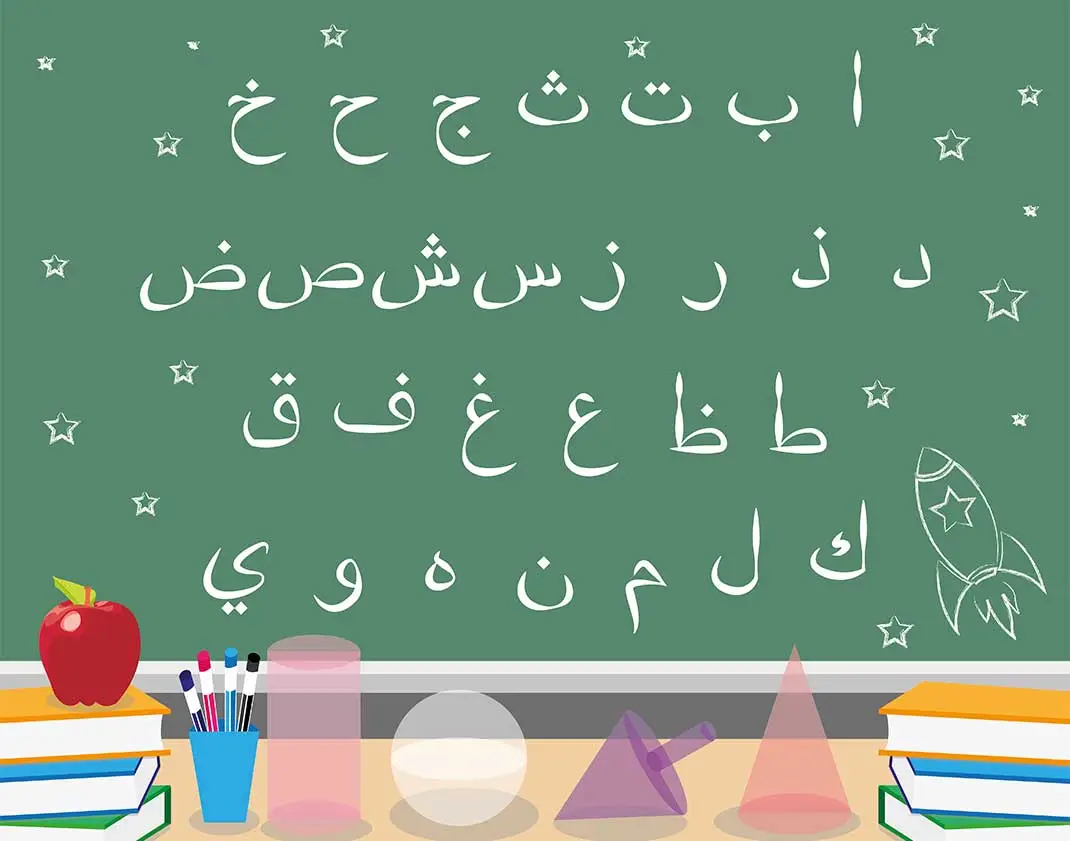Discover our “Resources” page to access a multitude of educational materials, interactive tools and practical guides to facilitate your learning of Arabic!

Learning Arabic can seem daunting for beginners. However, with the right approach and resources, mastering this rich and fascinating language is achievable. This article will explore the essentials for starting to learn Arabic, focusing on the uniqueness of the Arabic alphabet, basic Arabic words, the characteristics of Arabic writing, and how to speak Arabic using simple sentences. Additionally, we will cover practical tips, the best online Arabic courses, and some language travel programs for full immersion.

Understanding and using basic Arabic words is a crucial step for anyone starting to learn the language. These simple terms provide the foundation on which you can build more advanced understanding and smoother communication. Here is a selection of essential Arabic words that every beginner should master:
These basic words provide a solid foundation to start your journey in learning Arabic and will help you establish simple but essential interactions in the language.
In Arabic, it is possible to form simple sentences with or without a verb. Understanding the structure
of noun and verb phrases is important for accurate communication in Arabic.
For example, for verb sentences you can form constructions like “الطالب يقرأ” (al-ṭālibu yaqra’u – the
student reads), where “الطالب” (al-ṭālibu) means “the student”, “يقرأ ” (yaqra’u) means “reads”, and
“ي” (ya) is the prefix indicating the third person singular masculine.
For noun phrases, you can use constructions such as “الكتاب جديد” (al-kitab jadid – the book is new),
where “الكتاب” (al-kitab) means “the book” and “جديد” (jadid) means “new”.
By understanding these two types of constructions, you will be able to form simple and clear
sentences in Arabic to communicate effectively.
To get started in learning Arabic, taking a structured approach and using beginner-friendly resources
is essential. Here are some practical tips for new learners:

Among the many resources available, online courses offer unparalleled flexibility and accessibility.
The online learning platform www.learningarabic.online stands out as one of the best options for
beginners. Here are some features of this platform that make it an ideal choice :
1. Structured Lessons : Lessons are carefully organized and progress from learning the alphabet and
basic Arabic words to building more complex sentences. This structured progression ensures in-depth
understanding and consistent development of language skills.
2. Interactive and engaging : The platform uses a variety of interactive methods such as videos,
interactive quizzes, and practical exercises to keep learners interested. This engaging approach
makes learning Arabic more enjoyable and effective.
3. Native Tutors : Learners have the opportunity to practice with native tutors, which is crucial for
improving pronunciation, comprehension and speaking. Interacting with native speakers provides
authentic language immersion and a valuable cultural experience.
4. Accessibility and flexibility : Courses can be taken at any time, giving learners the freedom to
progress at their own pace. This flexibility allows learning to be adapted to busy schedules and
personal constraints.
5. Community of learners : In addition to courses, the platform offers forums and discussion groups
where learners can exchange ideas, ask questions and help each other. This community of learners
creates a collaborative and stimulating learning environment.
Additionally, www.learningarabic.online offers free Arabic courses and language stay programs in
Arab countries such as Tunisia, providing learners with a unique opportunity for total immersion in
the Arabic language and culture. By combining these elements, the platform offers a complete and
motivating learning environment, perfectly suited to beginners wishing to master the Arabic
language.
By following these tips and using a variety of resources, you will progress effectively in your Arabic
learning. Remember to stay persistent and motivated, and you will see significant progress over time.
Our LEARNINGARABIC.ONLINE platform is the result of the combined efforts of numerous specialists in Arabic language, educational sciences and information technologies. It uses the interactive ANAS (Arabic for Non-Arabic Speakers) program, integrating the most advanced technologies in online learning (e- learning). This program is designed to be user-friendly and engaging, making lessons enjoyable with multimedia resources and interactive exercises suitable for different learning levels.
For more information, do not hesitate to contact us
©2024. LEARNINGARABIC.ONLINE. All Rights Reserved.